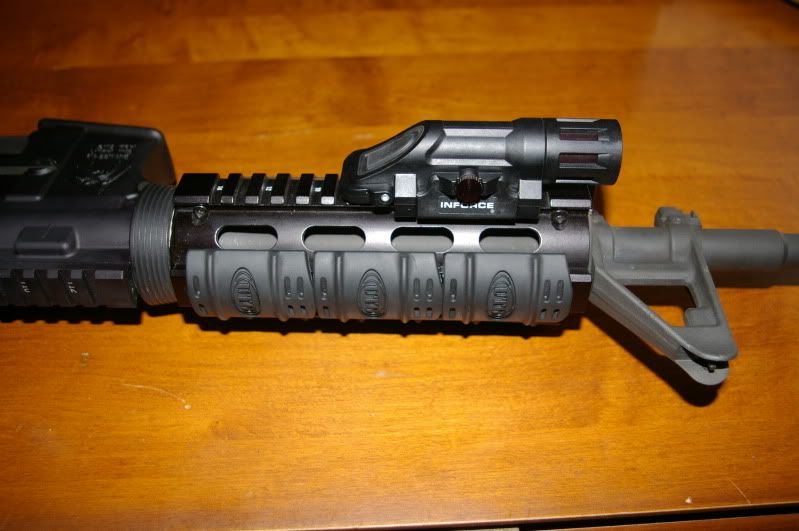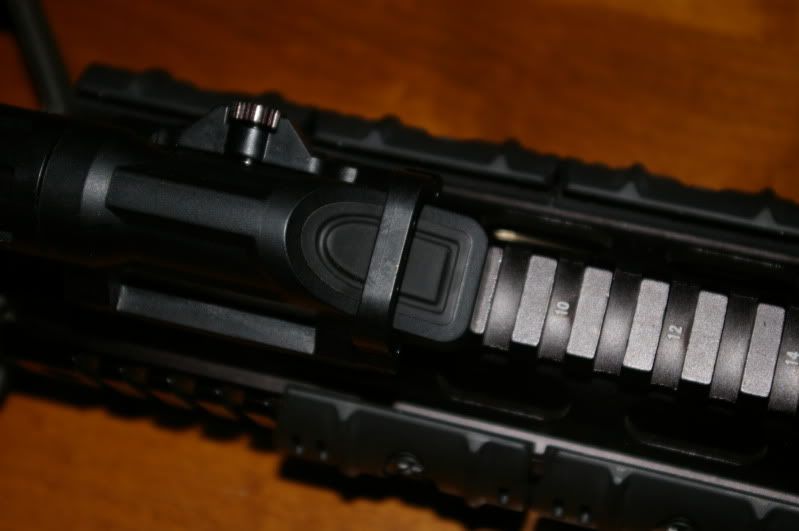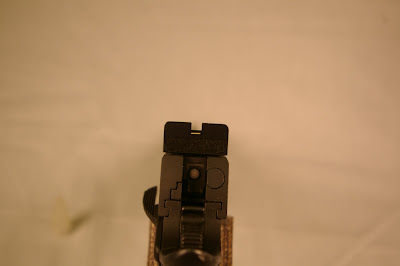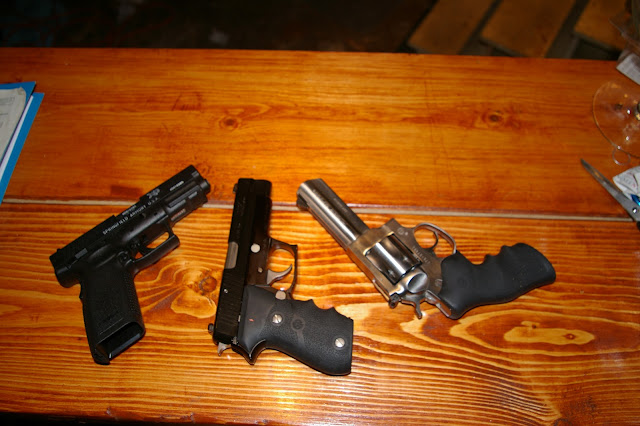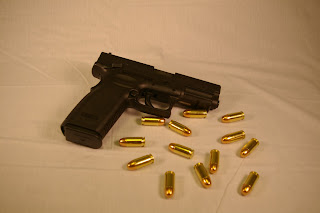Many of you are familiar with the INFORCE brand, which has
gained a very strong reputation, particularly in Military and Law Enforcement
circles. Emissive Energy Corp., an
American corporation founded in 1991, produces INFORCE brand products. Emissive Energy is also responsible for
products under the INOVA brand name as well, until the brand was sold in
2010. This is all beside the point,
however.
INFORCE has recently released a new weapon light, simply
named the Weapon Mounted Light, or WML. Allow me to begin with some technical
details. The WML is just over 4” long,
the bezel is 1” in diameter, and the unit is stunningly lightweight, at a mere 3 ounces,
including the single CR123 battery. The
light has two output settings. On
“High”, the light puts out 125 lumens for about 2 hours on a fresh
battery. Set it on “Low”, and you get 30
lumens for 10 hours of continuous run time.
This light, while it may be small in size, does not lack any
of the features of it’s larger, heavier counterparts. Aside from the previously mentioned High and
Low output settings, the light features a strobe function. All of these features can be operated as constant-on
or momentary through the use of the single button on the back of the light. When I found that this light had all of these
features and only one button, I was expecting a catastrophe waiting to
happen. Picture someone’s home being
broken into, and instead of turning the light on momentarily, the homeowner is
fumbling, cycling through all of the “settings”, trying to find the one he’s
looking for. While this is going on,
he’s giving away his position, essentially painting a target on himself. . .
This couldn’t be farther from the truth. The operation of all the features of the
light are very intuitive. As with all new firearms and accessories, there is a learning curve, and some practice is required to "master" said items. Without the aid of an owner's manual or any form of instructions, I was able to comfortably activate all of the features this light has to offer within minutes of turning it on. As I said,
operation is very intuitive.
With all of the features this light has, it is no surprise
that a tape switch is not available. In
my opinion, one isn’t needed. On my
AR15, I mounted the light on the left side of the quad rail, right where my
thumb would normally rest. I was never
able to get used to a vertical or angled foregrips. The back of the WML is angled, with a large
button that is very easy to find and activate. The button also has a flip-up lockout lever that is intended to prevent accidental/unwanted activation of the light. It is a good idea in some cases, and solves the problem encountered by other tailcap switch equipped weapon lights. The beauty of this design is that such an idea is not needed here. The ergonomic design, combined with the shape of the button itself, prevents most all accidental light discharges. Palm strikes, bumping into walls, doors, etc., will not turn the light on. I found the lockout lever to be unnecessary, but it's shape and location do not detract from the use or aesthetics of the light in any way, as it is virtually unnoticeable unless it is in the "up" position, as pictured below. Even in this position, it is still possible to activate the light, it simply requires a more deliberate motion to do so.
The Breakdown:
Pros: Lightweight, bright, packed with features that some higher-priced models lack, available with IR illumination, black and tan colors available to match the light to your rig, battery consumption is on par with similar lights.
Cons: Lack of tape switch compatibility may be an issue for some.
Bottom Line: If you are looking for a rock-solid weapon light that won't add pounds to your weapon, look no further. The price is right when compared to comparable lights, and the features packed into this small package make it a great choice. Simple mounting, quick detach, intuitive operation, and power, all combined in a package that is less than 3 ounces.
I'd like to extend my gratitude to Rick at TacticalLEDs.com for the opportunity to review this product.
If you have a product you would like to see reviewed here, please contact us at thelowready@gmail.com
If you have a product you would like to see reviewed here, please contact us at thelowready@gmail.com


